by James Scott Bell
@jamesscottbell
 Around 850 A.D. a crew of Scandinavians was sailing around and got off course. They saw some land, and decided to check it out.
Around 850 A.D. a crew of Scandinavians was sailing around and got off course. They saw some land, and decided to check it out.
They didn’t know how cold this land could get, for if they had they might have turned right around and headed home. The place was packed with ice. “Let’s call it Iceland,” one of them said. And so it was claimed for good King Fairhair.
When word got to the king, he said, “The future is all about real estate. So let’s put in some family homes, a fish market or two, and a boat yard.”
The settlements began. It was hard at first to find a hospitable spot to set down roots. Whoever designed Iceland had put in lots of lava streams and glaciers, rocks and crags, and one strip mall with a tattoo parlor and the offices of the physician Dag “Dr. Leech” Gunnarsson.
Nevertheless, after several exploratory ventures, they found a place where at least the modicum of a village might be established.
But there was a modicum already there—with some strange fellows in cowls. These were Irish monks, who’d been there for over 100 years. These early inhabitants of Iceland were “Culdees.” Culdee comes from the Celtic Céile Dé, which means “God worshipper.” These monks lived lives of asceticism apart from human society, seeking entire sanctification. They had learned early, at least as far back as the 700s, that there’s not much sanctifying taking place in the world of human passions. Thus, they eschewed all video games, smart phones, talk shows, and Twitter.
The new settlers had to come up with their own form of entertainment. Life was taken up with catching foxes and ducks, reindeer and mice, whales and seals. These were often eaten at great feasts, where the conversation revolved mostly around the development of table manners. A century of this kind of palaver grew boring. So one night someone suggested, “Can somebody please tell a story?”
The original sagas were Icelandic prose narratives that were roughly analogous to modern historical novels. They were penned in the 12th and 13th centuries, and blended fact and fiction to tell the tales of famous rulers, legendary heroes, and average folks of Iceland and Norway. And they were aptly named: saga traces back to an Old Norse root that means “tale.” The English word first referred only to those original Icelandic stories, but saga later broadened to cover other narratives reminiscent of those, and the word was eventually further generalized to cover any long, complicated scenario.
According to the Encyclopedia Britannica, 1947 ed., the saga “in its purest form, extolled the life of a hero, governed by fixed rules, and intended for oral recitation.” The fixed rules were “simplicity of plot, chronological order of events, set phrases used even in describing the restless play of emotion or the changeful fortunes of a fight or a storm. The absence of digression, comment or intrusion of the narrator’s person is invariably maintained.”
Here you have plot, structure, restless emotions, and no author intrusion.
Further, these sagas display “the keen grasp of character, the biting phrase [style], the love of action and the delight in blood which almost assumes the garb of religious passion.”
The most popular of these oral tales were eventually written on scrolls. We have none of the originals, but copies that passed through various iterations: Editing and compounding (1220-1260), padding and amplifying (1260-1300), and the collection in large manuscripts (14th century).
Among the most famous Icelandic sagas are Vatzdaelasaga (890), relating to the settlement and chief family of Waterdale [historical fiction!]; Hord’s Saga, originally composed around 980 and telling the story of an outlaw named Hord [Anti-hero!].
We also have Havard (c. 1000), which recounts the titular character’s revenge for his son, murdered by a neighboring chief [revenge plot]; Heidarvigasaga (1015), the tale of a great blood feud [The Godfather, anyone?]; Eyrbyggia (1031), political intrigue; and Laxdaela (1026), a love triangle. Laxdaela features a female lead, Gudrun, who is the most famous of all Icelandic heroines. (Laxdaela spent forty weeks on the Icelandic Times bestseller list.)
All this goes to show how the fundamentals of storytelling seem innate throughout various cultures, and are still valid:
- A hero with whom we identify.
- A plot complication.
- Restless emotions.
- Action.
- Death stakes.
- Style (absent author intrusion).
Saga has come to mean novel or series of novels that take place over a long period of time, usually in a historical context. The Trials of Kit Shannon is my saga series. I also wrote a long historical that covers World War I and takes us into 1920s Hollywood.
But the essence of saga, like that of myth, can apply to all genres of fiction. Think hero. Think big. Think action. Think emotions. Think death stakes (physical, professional, or psychological).
Most of all, think about telling a story to an audience that has worked hard hunting or fishing all day, and will fall asleep if you bore them!


 We’ve often discussed here the different approaches to writing a novel. In dualistic terms, we sometimes use the terms “plotters” and “pantsers.” Or, “outliners” and “intuitive (or discovery) writers.” There are some ’tweeners (“plantsers”), too. Doesn’t matter, as long as the author creates a finished work that’s the best he or she can do.
We’ve often discussed here the different approaches to writing a novel. In dualistic terms, we sometimes use the terms “plotters” and “pantsers.” Or, “outliners” and “intuitive (or discovery) writers.” There are some ’tweeners (“plantsers”), too. Doesn’t matter, as long as the author creates a finished work that’s the best he or she can do. Mrs. B and I like to start our mornings together, early, with a cup of joe and some talk. We take it in the front room where we can hear the early morning birds come out to sing. We have a nice aviary in our back yard—mockingbirds, blue jays, doves, even the occasional oriole. The mockingbirds always take the lead. After all, they can have up to 200 songs in their feathery breast.
Mrs. B and I like to start our mornings together, early, with a cup of joe and some talk. We take it in the front room where we can hear the early morning birds come out to sing. We have a nice aviary in our back yard—mockingbirds, blue jays, doves, even the occasional oriole. The mockingbirds always take the lead. After all, they can have up to 200 songs in their feathery breast.
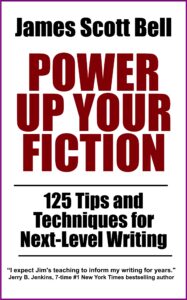
 I had a tough decision to make for this installment of JSB at the Movies. It came down to a choice between
I had a tough decision to make for this installment of JSB at the Movies. It came down to a choice between 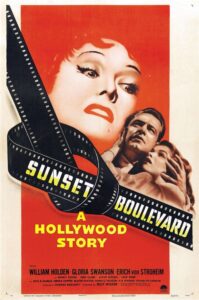 The director George Cukor suggested Swanson to Wilder, and how perfect she was. She had been one of the great “faces” of silents, and was the right age—50—for Norma. That’s when Wilder got the brilliant idea of using Cecil B. DeMille as himself, for he had famously worked with Swanson in the silent era and was still directing movies. Swanson would essentially be playing a version of herself.
The director George Cukor suggested Swanson to Wilder, and how perfect she was. She had been one of the great “faces” of silents, and was the right age—50—for Norma. That’s when Wilder got the brilliant idea of using Cecil B. DeMille as himself, for he had famously worked with Swanson in the silent era and was still directing movies. Swanson would essentially be playing a version of herself. A pole vaulter doesn’t come out of the locker room, pick up a pole, and get to vaulting. Like all athletes, they warm up. They do some stretching, some sprinting, test the poles, do a few practice vaults.
A pole vaulter doesn’t come out of the locker room, pick up a pole, and get to vaulting. Like all athletes, they warm up. They do some stretching, some sprinting, test the poles, do a few practice vaults.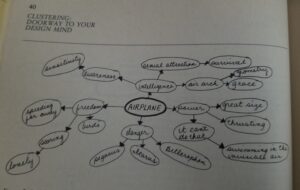
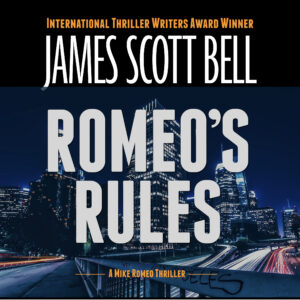
 We’ve talked in the past about doing some of our writing by hand, with an actual pen on actual paper. Since my handwriting resembles Foghorn Leghorn’s footprints, I have generally kept to the keyboard. I do, however, like to do mind maps with pen and paper. Sometimes I’ll block out a scene that way.
We’ve talked in the past about doing some of our writing by hand, with an actual pen on actual paper. Since my handwriting resembles Foghorn Leghorn’s footprints, I have generally kept to the keyboard. I do, however, like to do mind maps with pen and paper. Sometimes I’ll block out a scene that way. The first novel I ever wrote was about a boy who sneaks aboard a pirate ship. I was in third grade, in Mr. McMahon’s class at Serrania Avenue Elementary School, deep in the heart of the post-World War II paradise known as the San Fernando Valley.
The first novel I ever wrote was about a boy who sneaks aboard a pirate ship. I was in third grade, in Mr. McMahon’s class at Serrania Avenue Elementary School, deep in the heart of the post-World War II paradise known as the San Fernando Valley.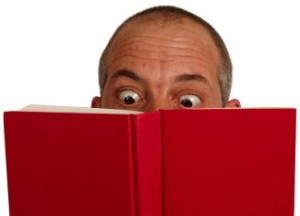 In my
In my  I read a literary novel a few weeks ago, and it frustrated the heck out of me. There was a powerful story wanting to bust out, but I felt it was hemmed in by the author trying too hard to be, well, “literary.” There was an emphasis on style, some of it quite good. But the scenes didn’t grab me. The author wanted things implied rather than rendered dramatically on the page. That’s often a nice touch, but not for a whole book. There was too much description and narrative summary, and not enough on-the-page action and dialogue. Any momentum was stopped a few times with flashbacks (Chapter 2 being one of them; not a great place for a flashback ). The ending was ambiguous, and left me feeling nothing.
I read a literary novel a few weeks ago, and it frustrated the heck out of me. There was a powerful story wanting to bust out, but I felt it was hemmed in by the author trying too hard to be, well, “literary.” There was an emphasis on style, some of it quite good. But the scenes didn’t grab me. The author wanted things implied rather than rendered dramatically on the page. That’s often a nice touch, but not for a whole book. There was too much description and narrative summary, and not enough on-the-page action and dialogue. Any momentum was stopped a few times with flashbacks (Chapter 2 being one of them; not a great place for a flashback ). The ending was ambiguous, and left me feeling nothing.